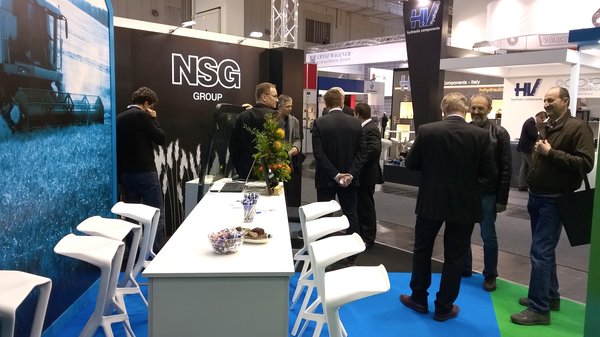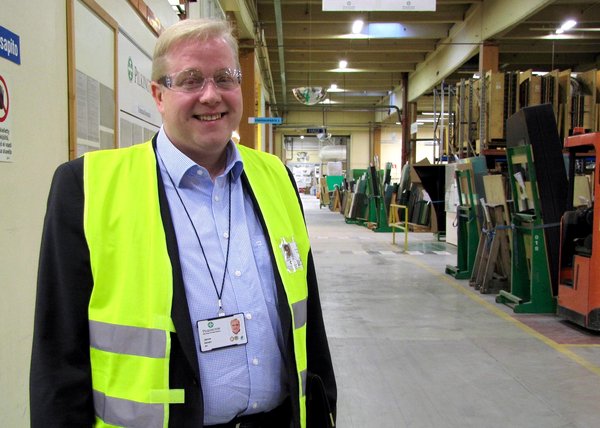INKA helps build a smart Tampere City Region
26.2.2016The Tampere City Region is focusing on developing a smart city and industrial regeneration. The companies, organisations and educational institutes in the region have everything that is needed for this task, and it is the mission of the INKA project coordinated by Tampere Region Economic Development Agency Tredea to ensure that the right partners sit down together around the same table.

Smart city lights and intelligent transport, new business in the manufacturing industry... The Innovative Cities (INKA) programme of Tekes, the Finnish Funding Agency for Technology and Innovation, has been in operation for a few years now, and its results are beginning to show in the Tampere Region. The general goal of the programme is to generate new growth by further developing the innovation environments of big cities.
“Tampere is a pioneer in this because we have extensive research and business competence, active urban development and joint innovation platforms, such as the internationally acclaimed Demola of New Factory,” says Project Director Pauli Välimäki of the City of Tampere, Development Manager of the INKA programme.
Indeed, the Tampere City Region has made its mark in the INKA programme. The programme has launched 24 projects worth approximately €20 million. The participants include approximately 150 companies and a large number of other partners.
“When the right kind of partners meet, new ideas are born. The role of the Tampere INKA team is to get an ideal combination to sit down together around the same table,” says Director, Industry Services, Tatu Miikkulainen of Tredea.

One of the completed INKA projects is “Lisäarvoa lasiin” (Added value for glass) by Pilkington Automotive Finland Oy and its partners. It resulted in an international-level smart glass innovation that many vehicle and machine manufacturers would like to incorporate in their own products.
The innovation was presented at the 2015 Agritechnica trade fair in Hannover, Germany. Manufacturers attending the world’s largest trade fair for agricultural machinery and equipment queued to see the company’s demo equipment with their own eyes.
“The huge interest clearly shows that we have achieved something that others don’t yet have but for which there is a clear demand,” says Programme Manager for new technologies Janne Ilonen of Pilkington.
In Pilkington’s demo equipment, four transparent displays placed in the tractor windshield provide the operator with essential information. Quite reminiscent of special effects from the movies – but for real.
“For the next two or three years, we will work hard as we start integrating this with our customers’ systems. We have a lead in this technology, and now we just need to run fast in order to maintain that lead,” says Ilonen.
The innovation combines expertise from many different fields, so its development required networking. Beneq was selected to manufacture the display and the Department of Pervasive Computing of the Tampere University of Technology and the Tampere Unit for Computer-Human Interaction (TAUCHI) of the University of Tampere helped develop the demo equipment for the trade fair.
“Right from the start, Tredea was able to create good contacts for us that helped us see that the idea was actually feasible,” says Ilonen.

In industry, INKA projects take advantage of the regional strengths: high expertise in mechanical engineering and the ICT sector as well as the readiness to utilise digitalisation. For example, VTT Technical Research Centre of Finland and the Tampere University of Technology have joined forces to offer companies services for developing intelligent machines through their SMACC concept.
The principles of the INKA programme also include having municipalities open their own development projects for new solutions from companies. As such, the most central location in Tampere, the Central Square, will become a test site for smart lighting as early as this year. The lighting will be controlled to match the situation, for example; more light in gloomy weather, appropriate mood lighting for events, and so on.
“An idea contest will be held in Tampere in the spring, and its results will probably lead to a new service, something fun or useful, becoming available to the residents as early as next summer – we will see what ideas emerge,” says Senior Scientist Eveliina Juntunen of VTT, Coordinator of the SenCity project.
There are around 10 similar test sites under way in Finland in the SenCity project, which is receiving funding from the INKA programme.